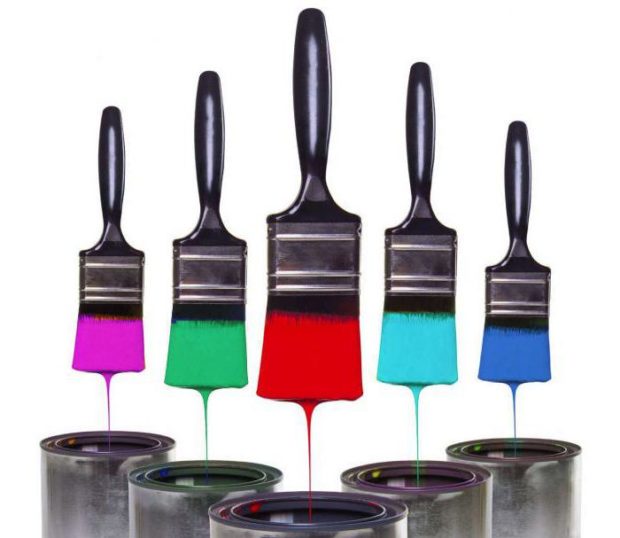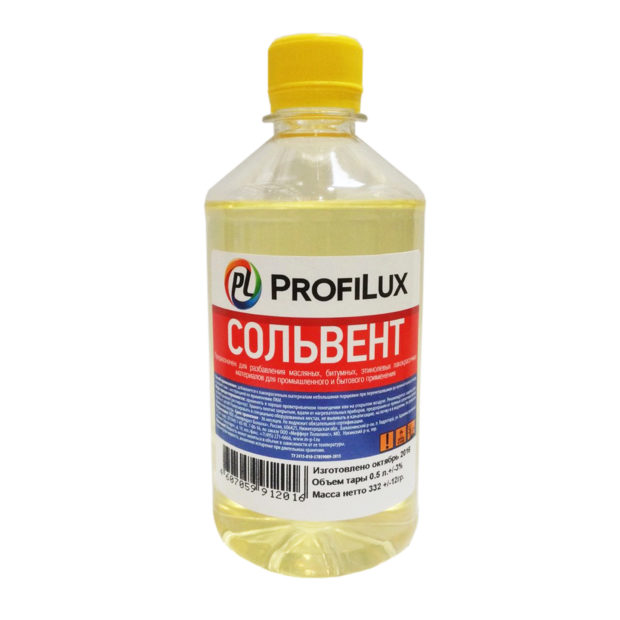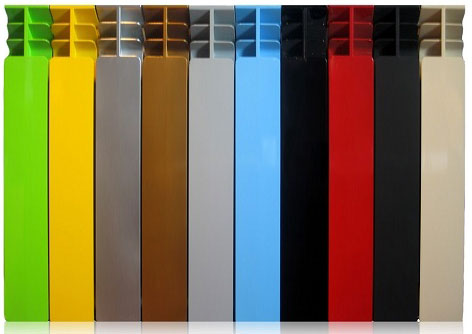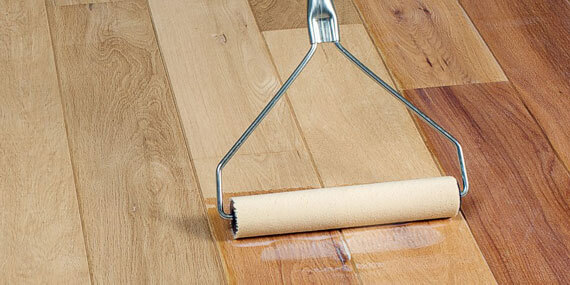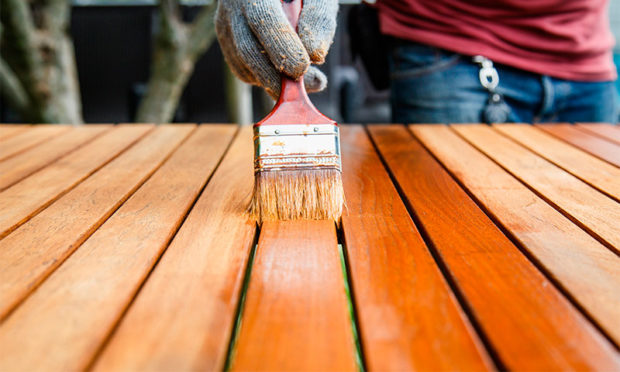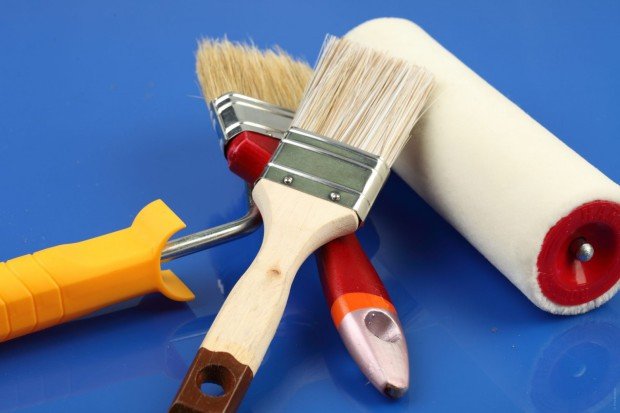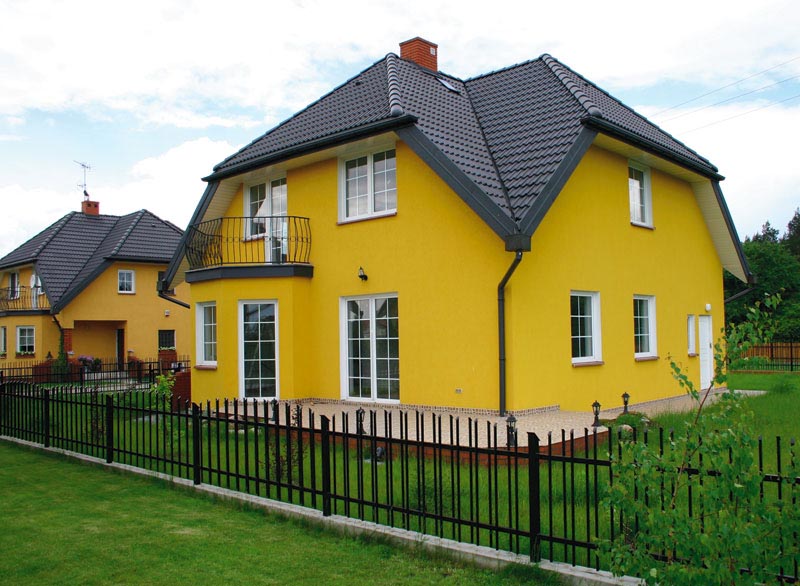7 tips for choosing a paint thinner
Very often in the process, it becomes necessary to dilute thickened paint in order to achieve a thin and even layer of protective coating, to clean clothes or objects from accidentally spilled paint, or to tidy up paint tool. In all these cases, we will need a solvent, and different compositions of different types of paints are needed. Which solvent for the paint to choose depending on the type of paint composition used, this article will tell.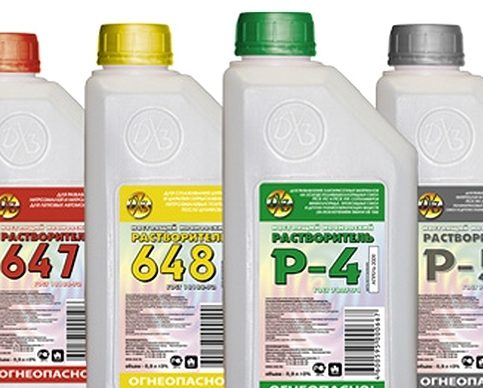
1. What is a solvent and what is it for?
Solvent - it is a rapidly evaporating inorganic or organic substance. Depending on the composition may be:
- single component;
- multicomponent.
Depending on the type of substance included in the composition, one-component solvents are divided into:
- organic (turpentine, kerosene, white spirit, solvent, gasoline);
- inorganic (water, liquid ammonia, phosphoric and sulfuric salts).
Organic solvents, despite the smell, are more in demand, and according to the rate of evaporation, they are divided into the following types:
- hardly volatileused to dilute car enamels and oil paints.This group includes, known to all, turpentine;
- medium volatileSuitable for acrylic or oil formulations. Kerosene belongs to this type, which undergoes special cleaning and only after that acquires the necessary properties;
- volatileused for car enamels, acrylic paints and varnishes and oil compositions. This includes white spirit, gasoline and solvent.
On a hot day, when direct sunlight is inevitable, the temperature is already high, it is better to use the third type, in the cool season - the first.
Besides dilution coloring formulations and their restoration upon drying, before direct application to surface, it must be degreased. This will help increase adhesion, especially if the surface is very smooth, such as metal. In addition, the paint will be more easily distributed on the surface, and the dried layer will be smooth and uniform. In the case of applying paintwork not with an ordinary brush or roller, but with special spray guns, there may be a need reduce density and viscosity of the composition. An accidentally dropped drop that was not noticed in time and managed to dry out will be easily wiped off with a suitable product. For a successful result, you only need to select correctly solvent appropriate type of used paints.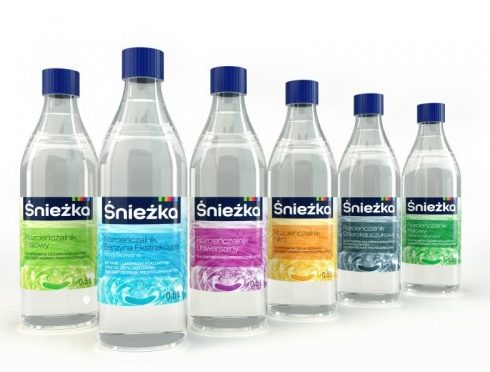
2. The principle of action
To understand this process, you need to know which component is fundamental in one or another coloring composition. Therefore, the solvent is selected similar in composition. When you add it to dried paint, it will complement her composition and make up for the evaporated part of the base. Thus, you will be able to achieve almost its initial state. The main thing, to stir thoroughly components among themselves, reaching the very bottom so that the solvent does not float on the surface and the composition becomes uniform in density.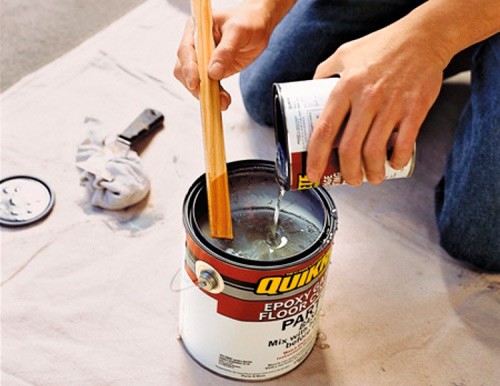 Basically, all interior paints are sold ready-to-use and do not need additional dilution. Only in the cases described above. There are some simple rules adhering to which, you will achieve the best result:
Basically, all interior paints are sold ready-to-use and do not need additional dilution. Only in the cases described above. There are some simple rules adhering to which, you will achieve the best result:
- Tableware, in which you will do the work, it must be clean. No dried paint fragments from previous uses and no small debris. Rinse with water and wipe dry.
- The most suitable is packaging that has cylindrical shape with smooth walls. In such a vessel, you can move the components as evenly as possible.
- If we are talking about paints that are to be diluted water then its part should be no more than 10% of the total mass.
- In alkyd enamels to be applied on outdoor work, you must add no more 3% of the total amount of fluid.
- For internal work - no more 5%.

If the solvent is added too much, your paint will not stick and simply drains from the treated surface. This is especially true for vertical planes on which streaks instantly form. Together with that declining and indicator operational qualities and coating service life. Let us consider in more detail the most common types of interior paints and the types of solvents suitable for them.
3. Solvent for alkyd paints
it oil formulations based on drying oils and enamel based on varnish. Resins are added as blowing agents. Depending on their type distinguish pentaphthalic (marking - PF) or glyphthalic (GF) enamel. In addition to liquid paints based on drying oil, they also produce thick-grated compositions (GF-013, PF-014, etc.). They are used both for external and internal works when finishing plastered, wooden or metal surfaces. They are fire hazard but it is absolutely non-toxic and lightfast.
- The most common and affordable means for diluting this type of paint is White Spirit. It is obtained in the process of distillation of petroleum products. Despite this, it is considered one of the most harmless and has the least pungent odor. It is also used for eliminate oil spots from the surface before coating and removing a viscous defect. With it, you can rinse your brushes after work, speed up the drying process of oil formulations, protect the wooden surface from exposure to moisture and bark beetles.

- Turpentine obtained in the distillation process of coniferous resin. Most often used as thinner and fattener surface. You will not confuse this solvent with any other because of its pungent and unpleasant odor. Paint diluted with turpentine will dry out much longer, which is sometimes necessary. In case of skin contact in small amounts, it does not cause burns or irritation if has a high degree of evaporation. However, a surface treated with such a composition will be flammable.
- Solvent obtained by pyrolysis of petroleum feed or by coking of coal. It is a composition of light hydrocarbons. It has a very pungent smell and is toxic and flammable. Therefore, when working with it, it is necessary to ensure access of air to the room. And keep containers with it in a ventilated place without direct sunlight. When added to paint, it is able to dry in a very short period of time, thanks to its high degree of evaporation. It copes with the elimination of oil and wax stains.

- Xylene (P-646) is organic chemical compound, obtained in the process of oil distillation. It is a liquid with low odor and very high evaporation rate. Used as thinner to obtain formulations of the required viscosity or for removal Alkyd paints from the surface. In the first case, it is added in small portions and thoroughly knead. In contact with skin or mucous membranes causes irritation. Therefore, work with it must be carried out in protective clothing and mittens, and upon contact, quickly rinse with soapy water under a stream of warm water.
Alkyd paints in the house are most often used for painting ceilings, walls in wet rooms, of doorswindow frames heating radiators or various pieces of furniture due to the fact that they form a more dense and durable coating. When choosing a solvent, carefully read the instructions on the labels, because not all of them are suitable for working with wooden surfaces.
4. Solvent for silicate compositions
Silicate paints are classified as mineral as the basis for them is liquid glass. They are fireproof, breathable and react poorly to moisture. They can be used for finishing plastered, stone or concrete surfaces outdoors and indoors. To dissolve this type of coating, you do not need to resort to the use of aggressive substances with pungent odors. Just apply silicate primer which can be found in any hardware store.
5. Solvent for emulsion and adhesive paints
Emulsion paints share for water emulsion, latex, acrylic, polyvinyl acetate and water dispersion. They can be applied to concrete, metal, wood or plastered surfaces. Are non toxic and fireproof. Adhesive compositions are made on the basis of aqueous solutions of organic polymers, for example, cellulose ether, polyvinyl alcohol, starch and casein. Their properties are very similar to emulsion, but are less resistant to moisture. Because of this, they are used for painting inside dry rooms. These types of coatings are practicallyno smell and due to its simple composition they can dissolve plain water in small quantities.
Withered acrylic paint tools can be removed by simply soaking in a soapy solution. For acrylic paints solvents such asIT spirit, kerosene, solvent and gasoline.

6. Characteristics of some solvents according to their number
Due to the appearance of a large number of diverse types of multicomponent solvents, the most common and often used of them, assigned numbers. This greatly simplifies the selection.
- R-4 Is a mixture on basis acetone and toluene, which is very volatile. It is mainly used for dissolving alkyd paints, varnishes and enamels based on chlorinated polymers. Its application positive way affects on the consistency of the coloring matter and its ability to film. As a last resort, they can degrease surface, but will have to work very quickly because of its high degree of evaporation. When working with this substance, it is necessary to comply with fire safety rules and use personal protective equipment, since it is flammable.
- Solvent 646 – universal composition that is used both in everyday life and in industry. Its multifunctionality is explained by a multicomponent, complex composition. They can paint dissolve, and surface degrease and wipe off the old coating. It is yellowish and very pungent odor which disappears immediately after drying. When applied to the surface is very evaporates quickly and paint diluted with it dries too quickly. Sometimes this brings inconvenience, and it is replaced with weaker solutions. But the dried surface becomes smooth and shiny. They can breed Not only paint but also some types of putty. His affordable price and the presence in any store made solvent 646 the most famous and popular.

- RS-2 - clear liquid pale yellow based xylene and white spirit which also has good properties.It is used for dissolving oil varnishes, bituminous paints and pentaphthalic enamels. It evaporates very quickly, but is very dangerous. Extremely poisonous his couples have a strong effect on the central nervous system, internal organs, respiratory system, skin, blood and even bone marrow. And with prolonged contact with unprotected skin, a rash provokes. Also, with the accumulation of its vapor in the air, it can an explosion occurs. Therefore, when working with the PC-2, you must be very careful, use glasses, mittens, a respirator and ventilate the room well.
- RFG - this is mixture ethyl or isopropyl alcohol with butyl or isobutyl in a ratio of 3: 1. It is used for diluting primers;
- P-647 suitable for diluting nitrocellulose enamels and primers;
- R-649 and R-650 - for dilution of glyphthalic and nitrocellulose enamels, soils;
- RCCH - solvent for paints on a rubber basis. So toxic that you need to work with him in a protective suit;
- RS (1-2) suitable for oil paint;
- RE (1-4) - compositions for working with enamels.
Be careful, all solvents, the number of which begins with the letter "P", are industrial, which means that they are extremely hazardous to health.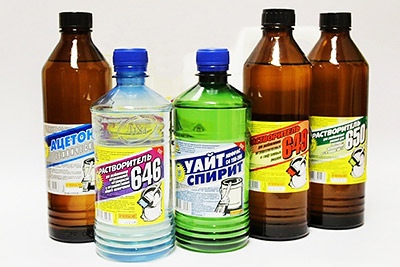
7. Safety
Never neglect your own safety! Especially when working with such toxic vapor-forming substances as solvents and paints. Required adhere to the basic rules:
- Required use of funds individual protection: goggles, a respirator, gloves, and in especially dangerous cases - a protective chemical suit.
- In case of contact with an open area of the skin immediately rinse place with plenty of water.
- Always work in ventilated area otherwise you will be poisoned by poisonous vapors. And when using particularly aggressive substances - an explosion.
- Follow normal temperature indoors when working with explosive substances. Elevated temperatures, operating heating elements or open flames are prohibited.
- After finishing all containers must be tightened tightly and put in a ventilated place away from direct sunlight. Storage is only allowed in an upright position - with corks up.


